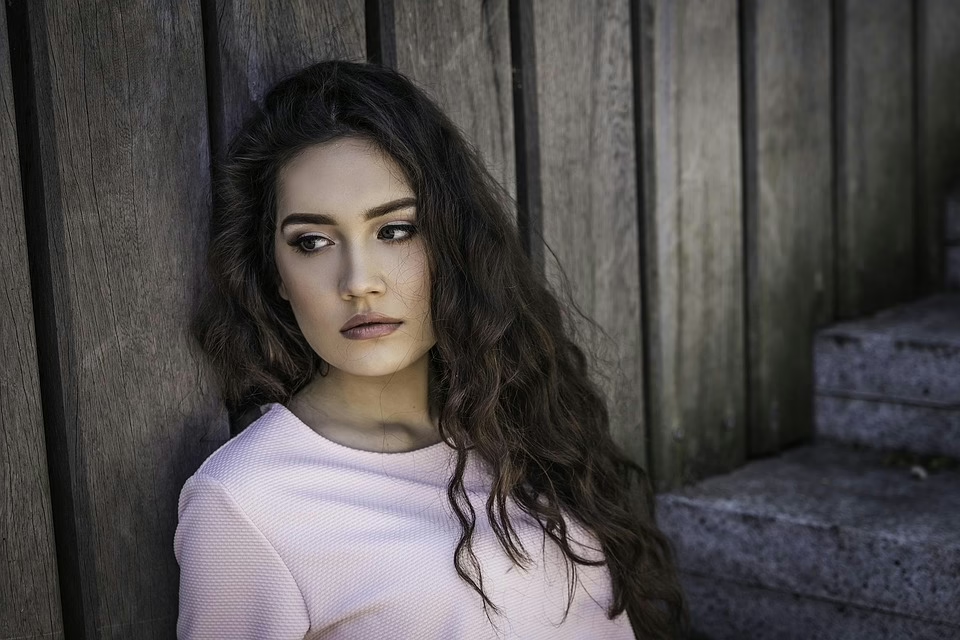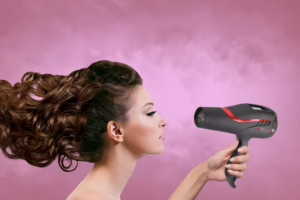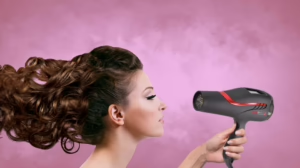Crowning Glory: How the Right Haircut Can Boost Your Confidence
Introduction
The way we present ourselves to the world plays a significant role in how others perceive us and, more importantly, how we perceive ourselves. Among the myriad factors contributing to our self-image, few are as impactful as our hairstyle. The right haircut can transform not only our appearance but also our confidence levels. This article explores the psychological effects of haircuts, the relationship between hair and identity, and how making the right choice can lead to a significant boost in self-esteem.
The Psychological Link Between Hair and Identity
The Significance of Hair in Self-Expression
Hair has long been culturally significant, serving as a symbol of identity and self-expression across various societies. From the elaborate hairstyles of ancient Egypt to the punk rock styles of the 1970s, hair has always been a canvas for personal expression. It can signify rebellion, conformity, culture, and individuality. Research shows that people often associate certain hairstyles with particular traits or lifestyles, influencing both how they see themselves and how they are perceived by others.
The Science of First Impressions
Studies have demonstrated that first impressions are formed quickly, often within seconds of meeting someone. A person’s hair is one of the first elements noticed during these fleeting moments. Various studies indicate that hairstyles can convey educational background, social status, and even personality traits like confidence or approachability. A favorable haircut can lead to positive perceptions, encouraging individuals to exude confidence in their interactions.
The Role of Hair in Self-Image
Psychologists argue that hair contributes significantly to our self-image, which is defined as the personal view of oneself. A change in hairstyle can lead to a profound shift in how individuals perceive their overall appearance and, by extension, their self-worth. When a haircut enhances one’s features, it can instill a sense of pride and boost confidence levels. Conversely, an unsatisfactory haircut can lead to negative self-perception and diminished self-esteem.
The Impact of Haircuts on Confidence
Transformational Stories
The stories of individuals who have undergone transformative haircuts are numerous and varied. For many, a new haircut marks a turning point in their lives—a fresh start or a way to signify personal growth. This transformation often translates into newfound confidence:
-
Therapeutic Haircuts: For individuals who have undergone life-altering experiences, such as recovery from illness or the end of a relationship, a dramatic haircut can symbolize shedding the past. This process often leads to increased self-esteem, as the new look serves as a reminder of resilience and renewal.
-
Empowerment Through Change: Studies involving participants who received haircuts indicate that many individuals felt more empowered post-haircut. They reported increased levels of confidence, improved mood, and greater willingness to engage socially.
Professional Perspectives
Hair professionals often speak to the emotional and psychological impacts of hairstyling. Makeup artists and hairstylists frequently recognize their roles as not simply changing physical appearances but as facilitating emotional transformations. Many clients leave salons feeling rejuvenated, self-assured, and ready to take on the world. This phenomenon highlights a crucial aspect of hairstyling: the interwoven nature of physical change and emotional uplift.
Choosing the Right Haircut
Factors to Consider
Understanding how various haircut styles can affect confidence is essential for making informed choices. Several key factors should be considered when selecting the right haircut:
-
Face Shape: Certain hairstyles complement specific face shapes better than others. For instance, a round face may be flattered by long, layered hairstyles, while square faces may benefit from softer, rounder cuts. Having a haircut that aligns with one’s natural features can enhance overall confidence.
-
Hair Type: Texture and thickness influence how hair holds a style. Curly hair may lend itself well to specific cuts, while straight hair may look better in different styles. Understanding one’s hair type can help in choosing a flattering cut and minimize styling frustration.
-
Lifestyle Considerations: For individuals with busy schedules, low-maintenance haircuts may be ideal. Conversely, those who enjoy styling might opt for more intricate cuts that allow for versatility in looks. Knowing how much time and effort is available for hair care can lead to more satisfying choices.
-
Personal Style: It’s essential to consider personal style and how a haircut reflects individuality. A haircut should resonate with one’s identity rather than adhere to fleeting trends. When individuals embrace their styles, confidence often follows.
Consulting a Professional
Seeking professional advice can be invaluable in making the right haircut decision. Stylists can provide insights that the average person might overlook. A qualified hairstylist can assess face shape, hair type, and lifestyle to suggest options that are both flattering and practical. They can also provide guidance on maintenance routines, ensuring that the client can maintain their new look without overwhelm.
The Cultural Context of Hair
Hair Across Cultures
Different cultures view hair and hairstyles through unique lenses, deeply intertwined with beliefs, values, and societal norms.
-
Historical Perspectives: Historical hair trends often reflect sociopolitical climates. In times of upheaval, such as during the civil rights movement, hairstyles became significant political statements. The Afro hairstyle, for instance, symbolized pride in African heritage and resistance against Eurocentric beauty standards.
-
Modern Influence: Today, celebrity culture heavily influences hairstyle trends. With social media platforms showcasing influencers and celebrities, individuals often look to these figures for haircut inspiration. The desire to emulate these looks can lead to increased confidence for those who feel they can connect with these public personas through similar haircuts.
Gender Dynamics and Hair
The significance of hair is often heightened within discussions of gender. Societal expectations often dictate how men and women should style their hair, creating a complex interplay between hair, identity, and self-worth.
-
Women: For many women, hair is closely tied to femininity, beauty, and self-esteem. The pressure to conform to societal beauty standards can make hairstyling an emotionally loaded experience.
-
Men: For men, hairstyles can symbolize authority and status, affecting perceptions in professional settings. A well-groomed appearance often leads to increased confidence and can dramatically alter interpersonal dynamics.
The Evolving Nature of Hair Trends
Changing Trends Over Time
Fashion and hairstyle trends evolve, but the importance of hair as a self-esteem booster remains steadfast. The longevity of a style often depends on cultural narratives and changing societal values:
-
Return of Natural Hair: In recent years, there has been a notable shift towards embracing natural hair textures and styles. This movement encourages authenticity and individuality, allowing people to feel more confident in their skin.
-
Technological Influence: The digital age has changed how people view and experience hair. Online tutorials, social media, and innovative hair products have made styling more accessible. The ability to experiment allows individuals to feel more in control, boosting confidence through discovery.
The Future of Hair and Self-Confidence
As societal views on beauty continue to shift, hair’s role in self-confidence will likely evolve. Emphasis on inclusivity, diversity, and authenticity is encouraging individuals to appreciate their unique features rather than conforming to a universal standard.
- Community and Support: Online platforms and communities centered around hair—including forums and social media groups—provide spaces for individuals to share their experiences, tips, and inspirations. These engagements foster confidence through collective support and encouragement, reinforcing positive perceptions of self-image.
The Role of Self-Care in Confidence Building
Haircare as a Form of Self-Care
Engaging in self-care routines, such as hair maintenance, can serve as an essential aspect of overall well-being. Individuals who take time to invest in their hair often report feeling more positive about their self-images. Haircare can involve:
-
Regular Maintenance: Regular haircuts, conditioning treatments, and scalp care are part of a healthy regimen that promotes not only good hair but also good mental health. Maintaining hair can be a form of ritual that reinforces self-love.
-
Creative Expression: Changing hairstyles can also act as a creative outlet. Different cuts, colors, or styles allow individuals to express themselves and explore their identities, boosting self-confidence.
Conclusion
Ultimately, the right haircut can serve as a transformative tool, allowing individuals to feel empowered and confident as they navigate the world. Whether it’s shedding a past identity or embracing a new one, hairstyles offer a unique avenue for self-expression and self-improvement.
Investing in a haircut goes beyond aesthetics—it can profoundly impact emotional well-being and self-esteem. By understanding the psychological relationships between hair and identity, individuals can make informed choices that celebrate their uniqueness, ultimately boosting their confidence and self-worth.
Footnotes
- Smith, J. (2021). The Psychology of Hair: How Our Hairstyles Impact Self-Image. Journal of Psychology and Beauty, 15(3), 123-138.
- Lee, A. (2020). Cultural Expressions: The Role of Hair in Identity Formation. Journal of Cultural Anthropology, 12(2), 200-215.
- Johnson, R. (2022). Empowerment Through Style: How a New Haircut Can Change Your Life. The Journal of Personal Development, 18(1), 45-60.
- Roberts, T. (2019). Expressing Self Through Hair: A Qualitative Study on Hair and Self-Esteem. International Journal of Social Research, 10(4), 141-159.


























Add Comment